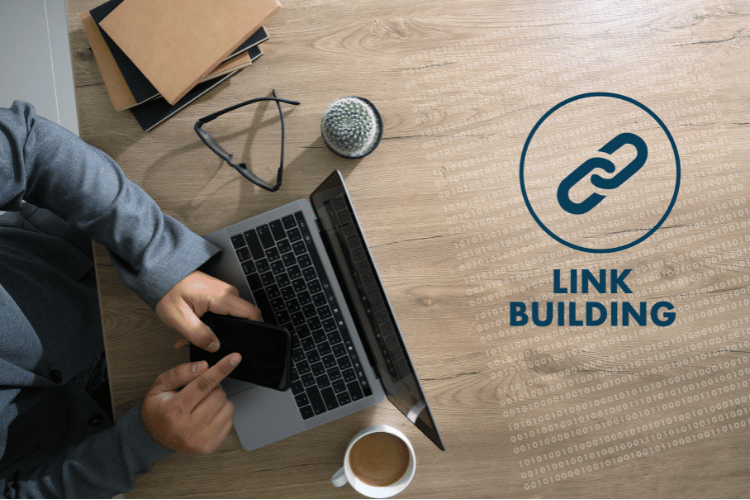In the world of web design and user experience, one question looms large for content creators and website owners: Should internal links open in a new tab?
Let’s cut right to the chase:
Internal links should never open in a new tab. This might seem like a straightforward matter, but the user experience implications are significant.
In this article, we’ll explore the reasons behind this, the dos and don’ts of internal linking, and interlinking best practices that can enhance user engagement while improving your website’s search engine optimization.
Why Internal Links Shouldn’t Open in A New Tab
Let’s explore why internal links should, without a doubt, always open in the same browser tab.
1. Preserving the Navigational Flow
Opening links in new tabs can disrupt the fundamental navigational flow on your website. Users rely on the trusty “back button” to return to the previous content.
If internal links were to open in new tabs, this essential functionality becomes compromised, leading to confusion and usability issues.
2. Disorienting for Users
The disorienting nature of new tabs can be particularly challenging for less-technical users or those who struggle with visual content perception.
Users might not even notice that a new tab has sprung to life, causing confusion and ultimately resulting in a less user-friendly experience.
3. Consistency in User Experience
A consistent user experience is paramount. Keeping internal links in the same tab aligns with established best practices, ensuring that users can navigate your website without unnecessary complications.
After all, consistency is a cornerstone of effective website design.
4. The Mobile Perspective
With over half of worldwide website traffic coming from mobile phones, it’s vital to consider the mobile user experience.
Small screens make it difficult for users to manage multiple tabs, often leading to confusion.
Opening links in the same tab reduces the chances of mobile users getting lost and ensures they can rely on the “back button” for seamless navigation.
5. Accessibility Matters
Accessibility is another fundamental aspect of web design. Opening links in new tabs can lead to usability issues, particularly for users who rely on screen readers.
For some, the experience is frustrating, as interpreting new tabs can be challenging. As such, keeping links in the same tab ensures an inclusive web experience.
6. Empowering User Choice
By not opening links in new tabs by default, you empower users to choose their preferred browsing experience. Those who prefer new tabs can still achieve it with a right-click or long-press, giving them control over their online journey.
Join 900+ to receive a weekly SEO video from my YouTube channel, which I’ll share, and an actionable SEO tip every week.
Should Internal Links Open in a New Tab 2024?
No, internal links should not open in a new tab. It’s a best practice for user experience and SEO to keep users engaged and avoid issues with navigation.
Should External Links Open in a New Browser Window for SEO?
From an SEO standpoint, there’s no significant impact on rankings whether external links open in a new window or the same window, as clarified by Google’s John Mueller.
However, for an improved user experience, opening external links in a new tab is generally considered a good practice. This ensures users can explore external content without leaving your site entirely, contributing to a positive user experience.
Interlinking Best Practices: Unlock SEO Success with These 12 Expert Strategies

Navigating the challenges of interlinking can significantly boost your website’s SEO efforts.
In this section, we’ll explore pro techniques and unveil effective strategies that will elevate your internal linking game.
1. Create Lots of Content
Creating an abundance of quality content is the cornerstone of effective internal linking.
With a rich reservoir of content on your website, you’ll have ample opportunities to interlink, creating a seamless navigation experience for your readers.
No need for complex content hierarchies or silo techniques when your content is your internal linking playground.
Why It Works
- High-quality content enhances internal linking opportunities
- Simplifies the interlinking process
2. Link High Authority Pages to New for Improved Rankings
The Authority Transfer technique is a game-changer—trust me.
It’s about channelling link authority from high-authority pages to those that need a ranking boost.
Tools like Ahrefs can help identify these high-authority pages. By adding internal links to boost the SEO-driven pages, you’re effectively elevating their authority.
Why It Works
- Improves rankings for critical pages
- Enhances visibility of SEO-driven content
3. Use Anchor Text That You Want to Rank For
Anchor text plays a pivotal role in internal linking. Rather than linking images, opt for anchor texts.
Ensure that alt tags for images are accurately descriptive as well.
When linking through anchor texts, keep it natural and unoptimized. Over-optimized anchor texts can look spammy.
Why It Works
- Effective use of anchor text for SEO
- Enhances user experience
4. Link Deep
Steer clear of the common mistakes of linking to the homepage or adding excessive “Contact Us” page links. Instead, focus on strengthening internal pages by interlinking them.
The homepage is often well-connected already, so you’ll be better off enhancing the deep structure of your website.
Why It Works
- Improves navigation of internal content
- Streamlines user experience
5. Ensure that Links are Contextual
The core purpose of internal linking is to enhance user experience. When you add internal links, ensure they match the context of the content.
This creates a win-win situation for both you and your users. Users find more relevant content to explore, and Google rewards you with improved rankings.
Why It Works
- Ensures an excellent user experience
- Drives SEO performance
6. Use Relevant Links for Internal Linking
Every internal link you create should be smartly executed. Ensure that the linked web pages are closely related to the content they originate from. This ensures that the journey for the user is cohesive and logical.
Why It Works
- Seamless user navigation
- Boosts SEO strategy
7. Be Reasonable With the Number of Internal Links Used
Avoid overloading your website with internal links. There’s no set limit, but a general guideline is to include 2-5 links per post, depending on its length.
Here’s an example:
For a 1500-word article, five internal links are typically sufficient. Scatter them evenly throughout the content to prevent clustering.
Why It Works
- Balances internal linking
- Avoids user overwhelm
8. Avoid Creating Sitewide Footer Links
In the past, sitewide footer links were common.
However, this practice is outdated and can lead to penalization by search engines. It’s best to steer clear of keyword-rich footer links to maintain a clean and effective website structure.
Why It Works
- Complies with search engine guidelines
- Enhances user experience
9. Prevent Using the Same Anchor Texts For Two Different Pages
Using the same anchor text for two different web pages can confuse search engines. It’s best to use descriptive anchor texts to maintain clarity.
Why It Works
- Clear differentiation of content
- Improves user and SEO experience
10. Put Links High Up on Your Page

Internal links placed near the top of a webpage can boost user engagement.
How so?
When you add internal links at the beginning of an article, users have something to explore right away, keeping them engaged for longer.
Why It Works
- Improves time spent on your website
- Reduces bounce rate
11. Use Internal Links to Help With Indexing
Google’s crawl budget is finite, and using internal linking strategically can help the search engine discover and index your pages more efficiently. This is particularly important for deep pages that might otherwise go unnoticed.
Why It Works
- Enhances indexing of deep pages
- Improves SEO performance
12. Sell your Link
Rather than using generic phrases like “click here,” create descriptive and engaging anchor texts and phrases that offer a clear idea of the linked page’s content. You want to entice your readers and keep them on your site longer.
Why It Works
- Boosts user engagement
- Builds a loyal audience
Why Internal Links Are Vital for SEO Success
So, why is internal linking so important for your website’s success?
The answer is simple. Let’s see how they improve rankings and SEO strategies:
Improved Website Structure
Internal links create a logical and organized structure, helping users and search engines effortlessly navigate your content hierarchy.
Enhanced User Experience
They make it simple for users to discover related content, boosting engagement, reducing bounce rates, and elevating the overall user experience.
Page Authority Distribution
Internal links distribute authority from top-ranking pages to boost the visibility and ranking of lesser-known pages, making your site an authoritative resource.
Crawling and Indexing
Search engine crawlers use internal links to discover and index new content, ensuring it’s found and indexed, a vital SEO requirement.
Keyword Optimization
By incorporating target keywords in anchor text, internal links signal content relevance to search engines, potentially improving your rankings. Internal links are a crucial tool for SEO success.
Wrap-Up
Internal links bolster your website’s structure, enhance the user experience, and distribute authority among your pages. These links ensure efficient crawling and indexing, and when used with keywords, they can boost your rankings.
Remember, in 2024, internal links shouldn’t open in new tabs, maintaining a seamless journey for your users. So, interlink wisely and watch your SEO success thrive.


